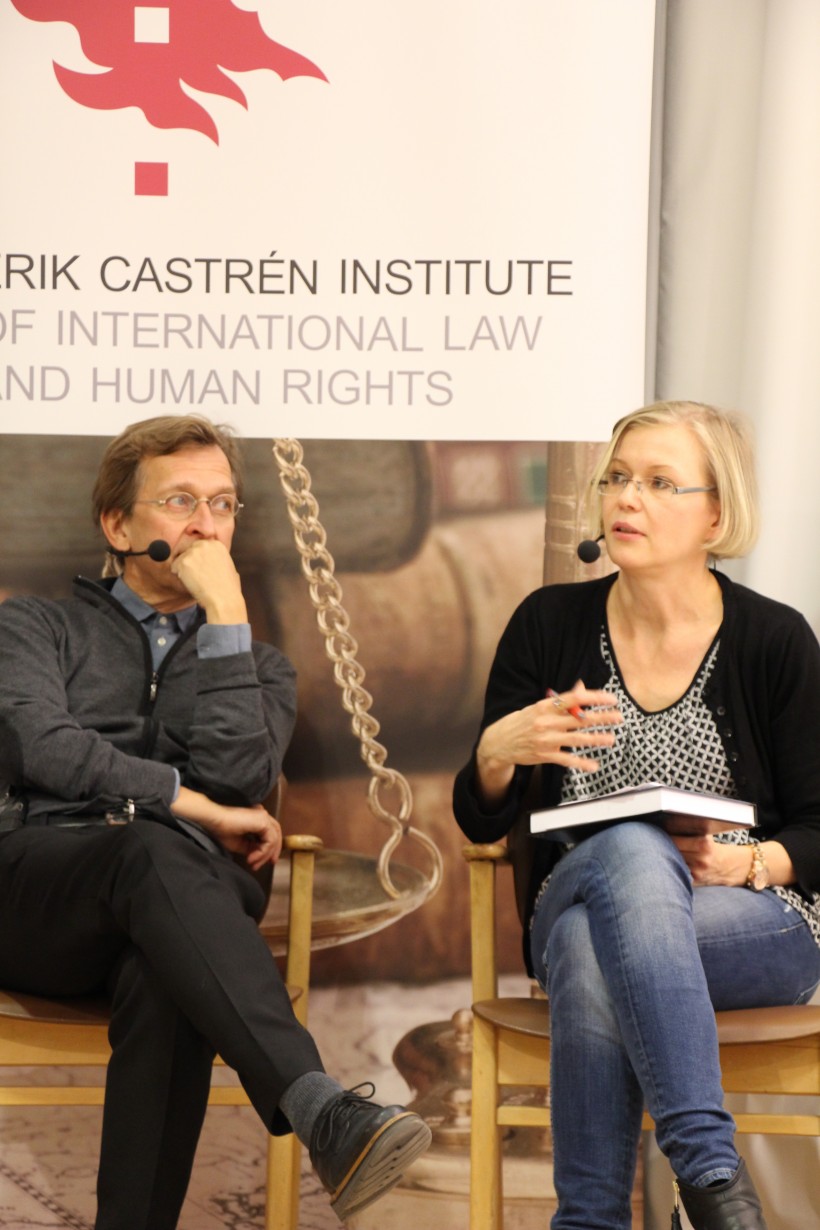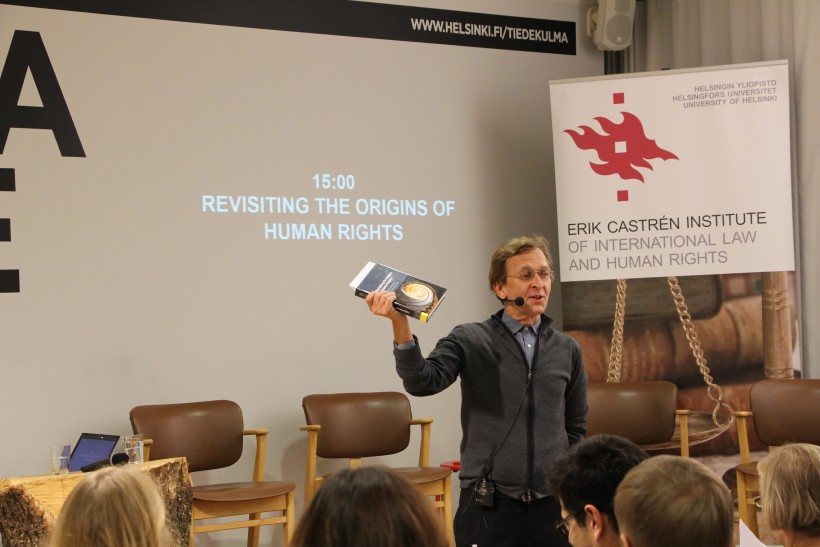The University of Helsinki Think Corner turned out to be too small for the book launch of Revisiting the Origins of Human Rights. The 25 seats assembled there were filled quickly and many spectators were left standing at the aisles or gathered around a large table at the back of the room.
The interest towards the book and the event come as no surprise as not only is Revisiting the Origins of Human Rights the most comprehensive volume on the history of human rights to date, but it also features a real all-star squad of the newly emerged field, including chapters by authors such as Annabel Brett, Lynn Hunt, and Samuel Moyn – just to name a few – as well as a foreword and an afterword by Martti Koskenniemi and Conor Gearty, respectively.
Furthermore, the composition of the book launch was almost equally impressive, starting with an introduction to the book by the editors, and followed by insider and outsider perspectives by Martti Koskenniemi and Luis Eslava, respectively, as well as a panel discussion chaired by Reetta Toivanen and guest-starring a one of the authors of the book, Jacob Giltaj – in addition to most of the aforementioned presenters.
As the editors explained in their introduction, the book project, initiated when the recent turn to history in human rights research was just beginning, grew out of frustration towards the way that history was told. When participating in a graduate school on human rights, both of the editors, neither of whom is a lawyer by their primary training, were struck by how permeated the whole discourse was with a focus on progress and continuity, without much problematization of methodology, aims, or different perspectives.
As such, the hope of the editors is that the book will increase critical self-consciousness within the field. In particular, the editors wish to emphasize how histories of human rights are guided by the notions of human as an autonomous individual, of human rights as entitlements instead of duties, and of predominance certain values, most notably freedom and equality.

As he explained, the book presents at least three such narratives. The first of these is focused on key moments, another on substances, such as treaties and conventions, for example, and the last one on projects. It is the hope of Koskenniemi that piercing the shiny shield of human rights allows us a more sobering view to the phenomenon and the practices within the field.
In particular, Koskenniemi wants us to shift emphasis from violations of human rights to the reasons and consequences of those violations. In other words, he calls for more emphasis on the causalities behind every human rights violation. Violations do not simply happen. Instead, human rights are violated as for every violation someone wins something.
Luis Eslava continued from where Koskenniemi left off in his comments on the book. Eslava focused especially on what he sees as the three most important contributions the book presents to the field of human rights research. The first is the invitation to rethink about the conventional understanding of history that dominates the field. In contrast to most works on the topic, Revisiting the origins of Human Rights has a keen focus on contingency.

The event was concluded by a lively panel discussion chaired by Reetta Toivanen, including both of the editors, Martti Koskenniemi and Jacob Giltaij as panelists. At focus was especially the book’s extraordinary writing process. As the editors explained, the book is the result of a very comprehensive writing process, which included two intensive workshops in Helsinki and New York, respectively, where the authors exchanged detailed comments on each other’s work.
In contrast to many other edited volumes, then, Revisiting the origins of Human Rights is truly a joint effort of the most qualified authors of the field, and as such a must-read and key reference point for anyone wishing to conduct human rights research.
Photos by Maria Jose Belmonte Sanchez.









